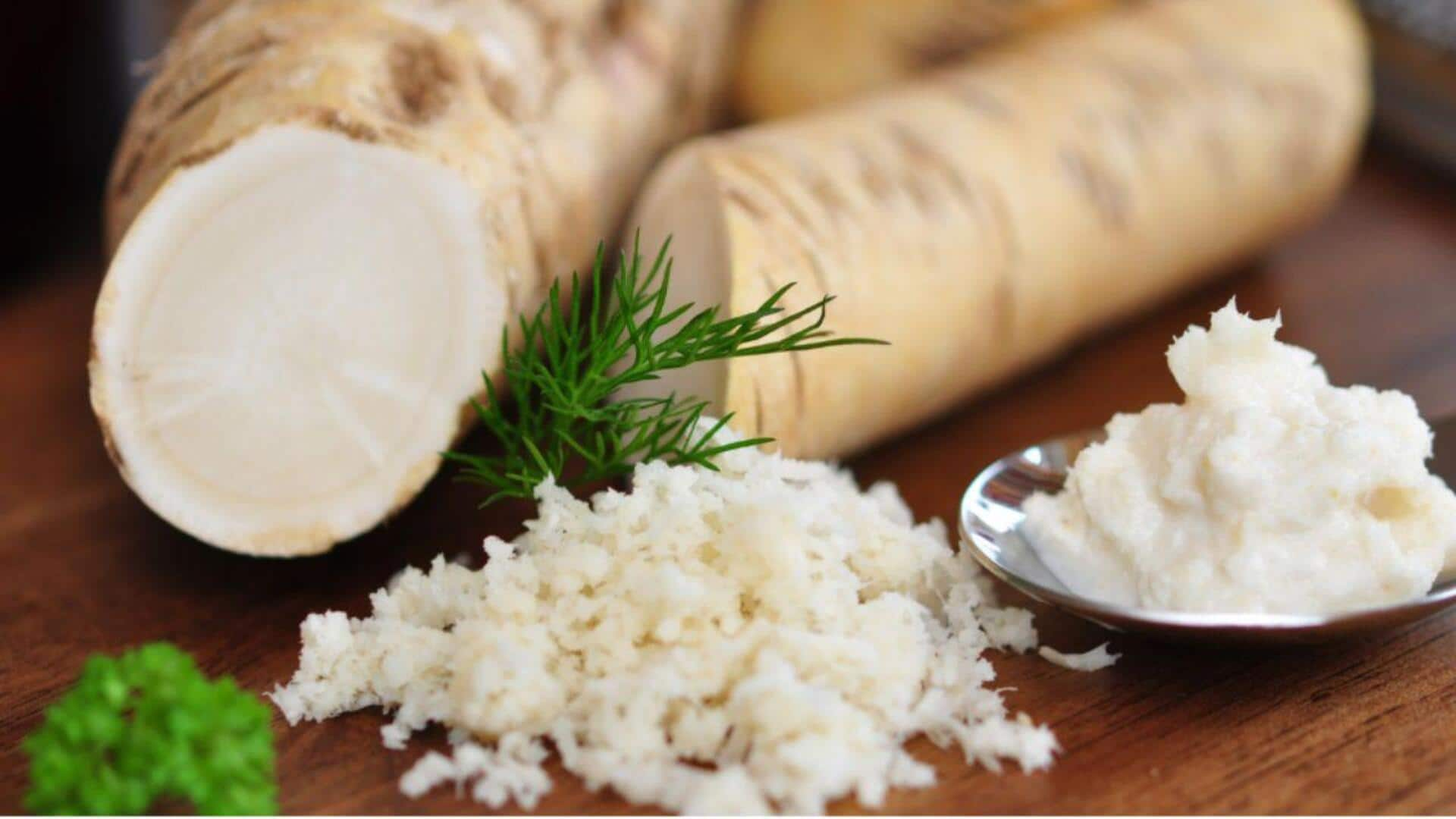
How to grow horseradish at home
What's the story
Growing horseradish at home can be a rewarding experience, giving you a fresh supply of this spicy root. The plant is hardy and easy to grow, making it ideal for home gardeners. With the right conditions and care, you can enjoy a bountiful harvest of horseradish. Here are some practical tips to help you cultivate horseradish successfully in your garden or containers.
Tip 1
Choosing the right location
Horseradish thrives in well-drained soil with plenty of sunlight. Choose a spot that gets at least six hours of sunlight every day. The soil should be rich in organic matter; add compost or aged manure to improve its quality. Avoid areas where water tends to pool, as excess moisture can damage the roots.
Tip 2
Planting horseradish roots
To plant horseradish, use root cuttings about 12 inches long. Plant them vertically in the soil, with the top end just below the surface. Ideally, plant them in early spring when the soil temperature is consistently above 45 degrees Fahrenheit. Space each cutting about 18 inches apart to give them room to grow.
Tip 3
Watering and fertilizing needs
Horseradish requires regular watering, especially during dry spells, but it is important to ensure that the soil is well-drained to avoid root rot. Fertilize the plants with a balanced fertilizer every four weeks during the growing season to promote healthy growth. This combination of consistent watering and regular fertilization will help horseradish thrive, yielding robust roots for your culinary needs.
Tip 4
Harvesting your crop
You can harvest horseradish roots once they are at least one inch thick, which usually takes around eight months after planting. Use a garden fork to carefully lift them from the ground without damaging other roots or surrounding plants. For best flavor, harvest before flowering occurs in late spring or early summer.
Tip 5
Managing pests and diseases
While horseradish is generally resistant to pests, it can still be affected by diseases such as white rust or downy mildew under certain conditions. To prevent these issues, ensure proper spacing between plants for good air circulation and avoid overhead watering, which can promote fungal growth on leaves.